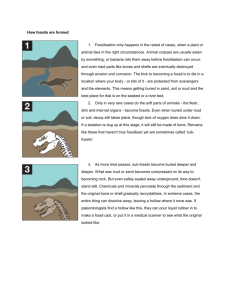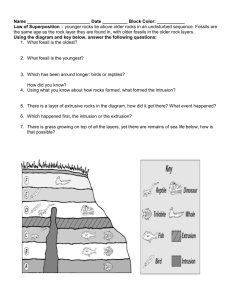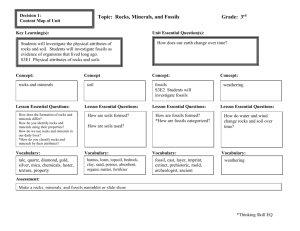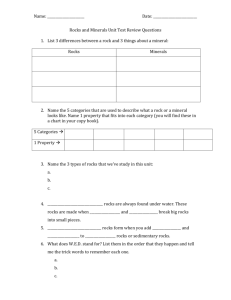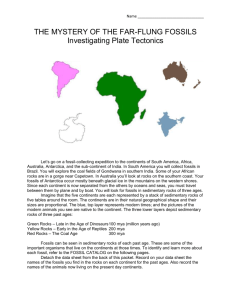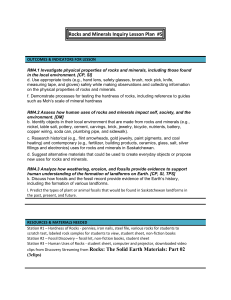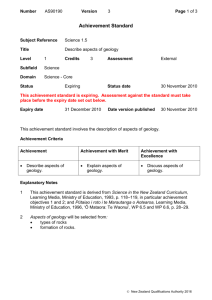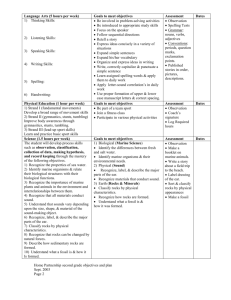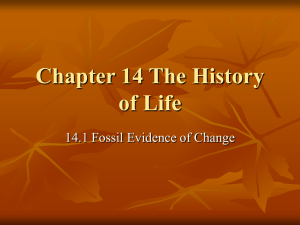I am a Scientist Lesson Plan Format
advertisement
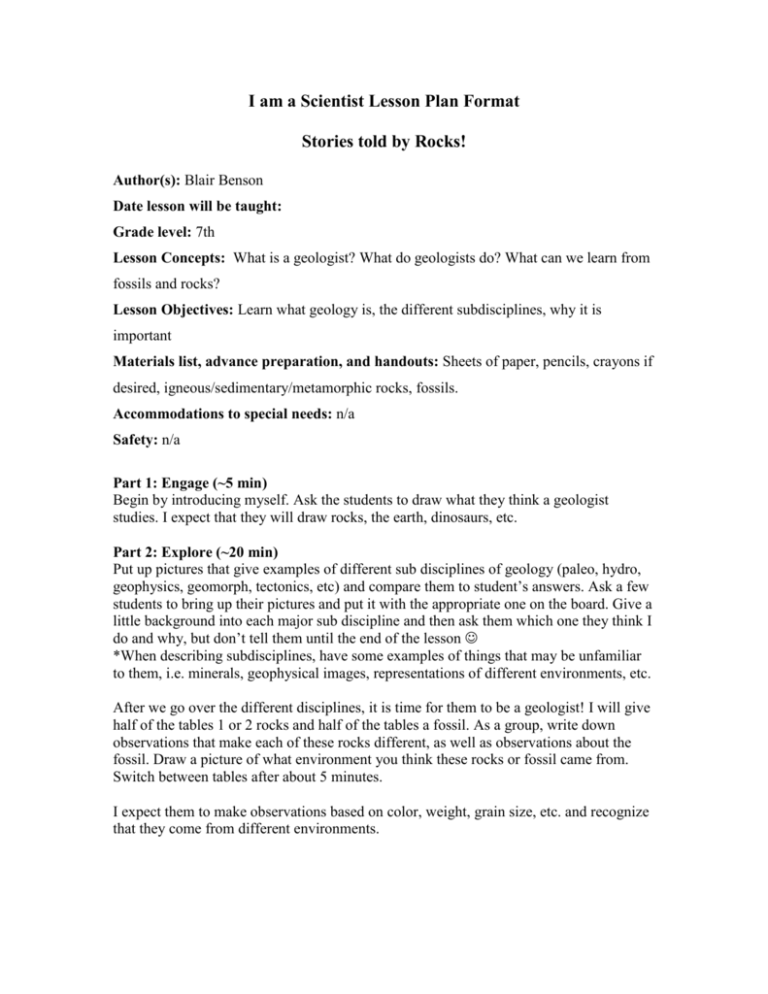
I am a Scientist Lesson Plan Format Stories told by Rocks! Author(s): Blair Benson Date lesson will be taught: Grade level: 7th Lesson Concepts: What is a geologist? What do geologists do? What can we learn from fossils and rocks? Lesson Objectives: Learn what geology is, the different subdisciplines, why it is important Materials list, advance preparation, and handouts: Sheets of paper, pencils, crayons if desired, igneous/sedimentary/metamorphic rocks, fossils. Accommodations to special needs: n/a Safety: n/a Part 1: Engage (~5 min) Begin by introducing myself. Ask the students to draw what they think a geologist studies. I expect that they will draw rocks, the earth, dinosaurs, etc. Part 2: Explore (~20 min) Put up pictures that give examples of different sub disciplines of geology (paleo, hydro, geophysics, geomorph, tectonics, etc) and compare them to student’s answers. Ask a few students to bring up their pictures and put it with the appropriate one on the board. Give a little background into each major sub discipline and then ask them which one they think I do and why, but don’t tell them until the end of the lesson *When describing subdisciplines, have some examples of things that may be unfamiliar to them, i.e. minerals, geophysical images, representations of different environments, etc. After we go over the different disciplines, it is time for them to be a geologist! I will give half of the tables 1 or 2 rocks and half of the tables a fossil. As a group, write down observations that make each of these rocks different, as well as observations about the fossil. Draw a picture of what environment you think these rocks or fossil came from. Switch between tables after about 5 minutes. I expect them to make observations based on color, weight, grain size, etc. and recognize that they come from different environments. Part 3: Explain (~9 min) Create a table on the white board at the front of the class and fill in observations given by the students, as well as where they think the rock or fossil came from and why. Then talk about what environment they think these came from (ocean, mountains, lake, volcanoes, forest, swamps, etc.) This will require feedback from each group, because they will all have different rocks and fossils that come from a particular “environment”. Part 4: Extend/Elaborate (~8 min) Ask the class how figuring out how or where these rocks or fossils formed is beneficial? What can a rock’s environment tell us (should lead to locating minerals, water, oil, natural resources). What can a fossil tell us (age, environment, climate, etc.). Now tell the students which part of geology I am from. Explain that I find out some of the same stuff, like locating groundwater, oil, minerals, archeological sites, buried pipes, etc, which should lead into the idea that although there are so many different disciplines in geology, we all work together to try and answer some of the same questions. Part 5: Evaluate (the whole time!) I will be constantly evaluating the students, particularly when they are making their observations to try and see what pre-conceived notions they have.


